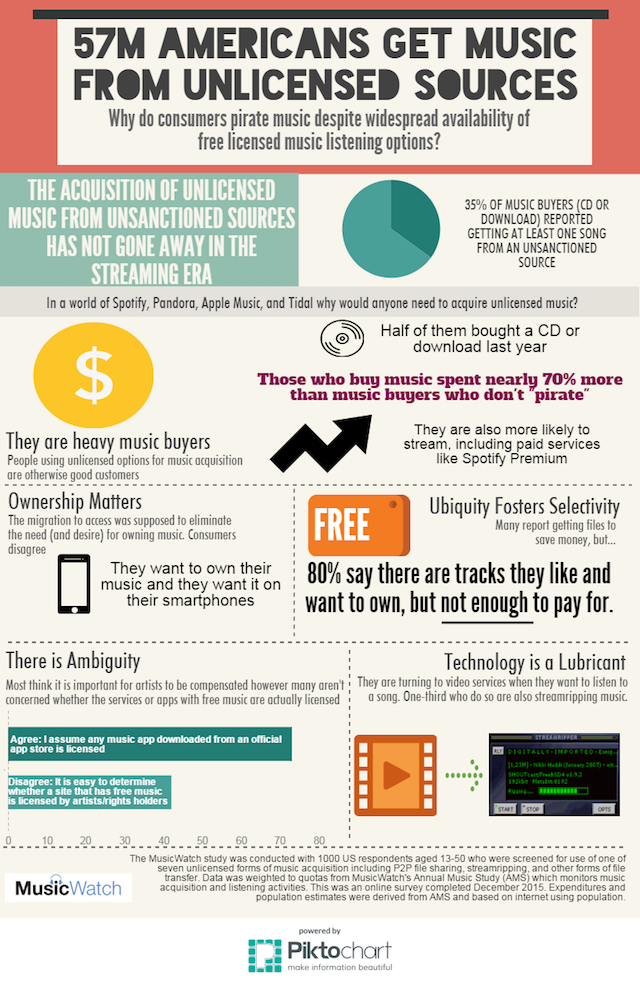MusicWatch has released new research on the various forms of music piracy, how music consumers obtain music without generating revenue, and to what extent they do.
Study author Russ Crupnik notes a common assumption that piracy has been on the decline thanks to the proliferation of streaming services. But the survey work finds some increase in the number of people acquiring music by infringing means. In 2004, there were 41 million people who engaged in downloads via P2P (peer-to-peer) platforms, and while the number dropped to 22 million last year, the current MusicWatch accounting found 57 million Americans engaged in unauthorized music acquisition. The figure includes not just illegal downloads, but also other forms of unlicensed acquisition from streamripping, mobile apps, or hard drive swaps.
MusicWatch’s finding was that people participating in questionable acquisition wanted to own music rather than simply access it. The paradox there is that respondents who report using streamrippers or other unauthorized tools are also the best music-product customers. The profile is of people who prefer owning music (old school) and sometimes acquire their tracks through unsanctioned methods (new school).
When there are tracks people want but don’t want to pay for, technology has made it easier for them to acquire it. The proliferation of tech has also created ambiguity and confusion. This is an old story, one that was reported even 15 years ago when P2P networks were taking off — everything about the existence of Napster and other burgeoning P2P networks in 2000 was legal, except for using them in a certain way.
MusicWatch has coined the term “badquisition” for modern-day infringement, a softer term that “piracy.” It’s worth noting the nuanced consumer profile revealed in this study: Respondents who purchase music spend 70% more money than those who don’t use unauthorized tools like streamripping. Contemporary pirates are also good customers.
Among the badquirers 73% agreed with the statement, “I assume any music app that I can download from an official app store is licensed by artists and rights holders.” MusicWatch found that badquirers are generally good customers, spending $33 per capita on direct music purchases; that’s above the average spend of $19 per capita.
MusicWatch’s study covered 1,000 U.S. respondents between the ages of 13 and 50.


